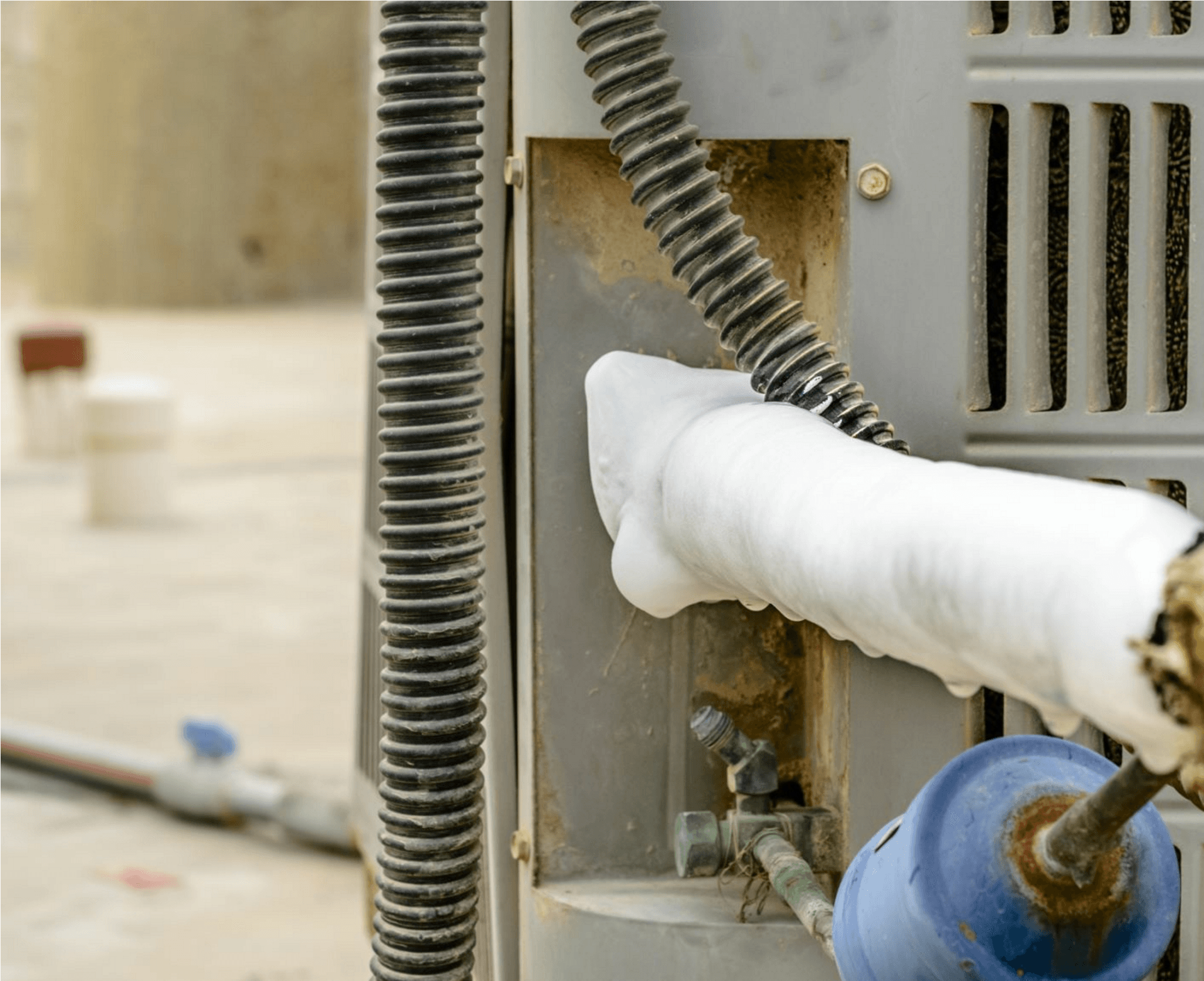My AC Pipe Is Frozen - What Do I Do? Instructions for Residents
My AC Pipe Is Frozen - What Do I Do? Instructions for Residents
Blog Article
They are making a number of good pointers on the subject of What Do I Do If My AC Pipe Is Frozen in general in this great article in the next paragraphs.

Introduction
Discovering that your AC pipe is frozen can be worrying, specifically during hot summertime when you rely upon your ac unit one of the most. Comprehending what to do in such a situation is critical to avoid additional damage to your cooling system and guarantee your comfort indoors.
Comprehending the Causes
Several variables can contribute to the cold of an air conditioning pipeline. Comprehending these reasons can aid you deal with the problem successfully.
Absence of Airflow
One usual root cause of an icy air conditioning pipe is inadequate air flow. When the air flow over the evaporator coil is limited, it can trigger the coil to go down below freezing temperature, resulting in ice development on the pipe.
Reduced Refrigerant Levels
Insufficient cooling agent degrees in your a/c system can likewise result in an icy pipeline. Low cooling agent levels can create the stress in the system to drop, bring about the cold of moisture on the evaporator coil.
Winter Conditions
In cooler climates, freezing temperature levels outside can contribute to the cold of air conditioning pipelines. If your air conditioning device is not correctly shielded or if there are leakages in the ductwork, cold air can infiltrate the system, creating the pipe to freeze.
Dirty Air Filters
Unclean or clogged air filters can restrict air flow in your air conditioning system, bring about various concerns, including an icy pipeline. It's vital to replace or cleanse your air filters on a regular basis to guarantee correct air flow and protect against ice accumulation.
Indicators of a Frozen Air Conditioning Pipe
Identifying the signs of an icy AC pipeline is crucial for prompt action.
Reduced Airflow
If you see a substantial decline in air flow from your vents, it can indicate an icy pipe.
Ice Buildup on the Pipe
Visible ice buildup on the refrigerant line or the evaporator coil is a clear indication of a frozen AC pipeline.
Odd Sounds from the Unit
Uncommon noises, such as hissing or bubbling, originating from your air conditioning device can indicate that there's ice existing on the pipe.
Immediate Actions to Take
When confronted with an icy air conditioning pipeline, it's essential to act quickly to stop further damages to your air conditioning system.
Shutting off the AC
The very first step is to shut off your ac unit to avoid the system from running and exacerbating the problem.
Checking for Blockages
Check the area around the interior unit for any type of blockages that may be obstructing airflow, such as furnishings or drapes.
Thawing the Pipe
You can make use of mild techniques like positioning towels taken in cozy water around the frozen pipeline to help thaw it slowly.
Safety nets
Taking preventive measures can assist prevent future events of an icy air conditioning pipe.
Routine Maintenance Checks
Set up normal maintenance contact an expert HVAC professional to make certain that your air conditioner system is running successfully.
Transforming Air Filters
Consistently replace or clean your air filters to prevent air movement limitations and maintain ideal performance.
Protecting Exposed Pipes
If your air conditioner pipes are subjected to chilly temperature levels, consider shielding them to avoid freezing throughout winter months.
Seeking Professional Help
If DIY methods stop working to solve the concern or if you're unsure about how to proceed, it's finest to seek support from a qualified HVAC service technician.
When DIY Methods Fail
If your attempts to thaw the pipeline or address various other concerns are not successful, it's time to call a specialist.
Relevance of Hiring a Professional HVAC Technician
A qualified HVAC professional has the expertise and devices essential to identify and fix problems with your a/c system safely and successfully.
Final thought
Managing an icy a/c pipeline can be a discouraging experience, yet knowing just how to react can assist lessen damages and bring back comfort to your home. By recognizing the reasons, recognizing the indications, and taking prompt activity, you can successfully deal with the issue and stop future occurrences.
Frozen AC Line: Why It Happens & What To Do About It
A frozen AC line can be a rather peculiar sight in a place like Phoenix, Arizona where nothing ever freezes. In this post, we’ll discuss what makes an air conditioner line frozen – and what you can do about it.
Dirty Air Filters
Did you know that you should be cleaning or replacing your air filters on a monthly basis? Failing to do this can result in airflow issues that, in turn, cause your evaporator coils and lines to freeze over. You’ll notice a buildup of ice on both components, although the buildup on your pipes will, of course, be more evident unless you open your air condition up to reveal the coils.
What To Do About It
Give your air filter a good cleaning if it’s reusable. If not, replace the filter outright. Next, switch your air conditioner’s fan setting on and leave it there for 2-3 hours. This will draw warm air in, helping to thaw your evaporator coil. You can also check out this article for some tips on cleaning the coils themselves if you’d like to speed the process up. Before you switch the unit back to its normal state, make sure the supply vents are completely unobstructed and free of dust or other debris.
If you keep having this issue even after replacing your filters regularly, contact a local HVAC repair company and have them inspect your evaporator coil, ductwork, and any other components that may be at fault. If you live in the Phoenix, Arizona area, give American Home Water and Air a call.
Low Refrigerant Levels/Leakage
What To Do About It
Contrary to what air conditioner “recharge” companies often tell their clients about refrigerant, it should never need to be simply refilled. You see, refrigerant runs in what experts refer to as a “closed loop.” Refrigerant really shouldn’t be leaving that loop. If it is, you’ve got a leak.
Paying someone to come and pump more refrigerant into your system (aka “recharge” it) isn’t the solution. Doing that will simply kick the can down the road. Besides, refrigerant leaks can be harmful to the environment and people in your home.
Rather, you need to take care of the leak with the help of a technician. Check out this article for some more information about dealing with air conditioners that are leaking refrigerant. Before you contact a technician, switch your thermostat to the off position. Then, switch the fan setting on and let it run for 2-3 hours so the unit can thaw.
Improper Temperature Setting
Improper temperature settings can also cause a drop in your air conditioner’s pressure. What many people don’t realize is that air conditioners are actually designed to run when temperatures have fallen above roughly 60 degrees Fahrenheit. If you run the unit when it’s cold outside, you’ll run into many issues, including frozen components.

Hopefully you enjoyed reading our post about How can I fix an air conditioner’s frozen pipe?. Thanks a ton for taking time to read through our short article. Do you know about another person who is sincerely interested in the topic? Why not promote it. Thanks a lot for taking the time to read it.
Contact Us Now Report this page